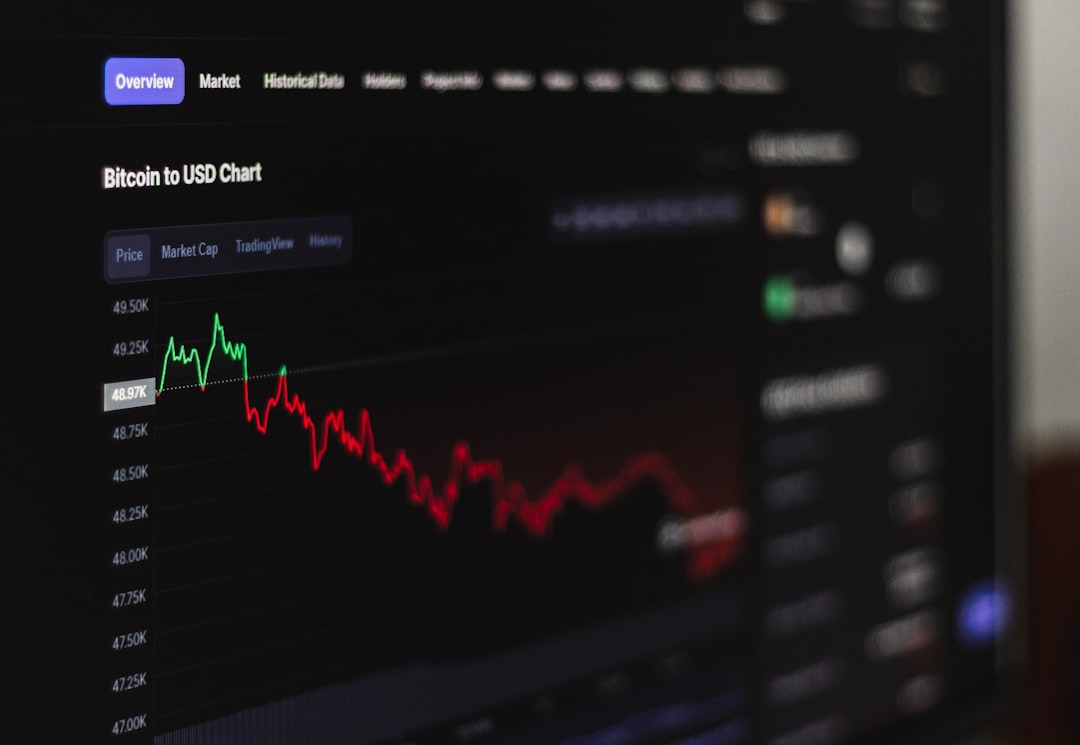Understanding Cryptocurrency Stock Charts: A Beginner’s Guide
When diving into the cryptocurrency stock charts, you may feel overwhelmed by the numbers, lines, and patterns. Whether you’re a seasoned investor or a curious newcomer, understanding these charts is crucial for making informed decisions in the volatile world of crypto.
Key Concepts Covered:
- Crypto market: The dynamic environment where digital currencies are traded.
- Blockchain: The underlying technology that powers cryptocurrencies.
- Cryptocurrency chart: Visual tools that track the performance of various cryptos over time.
Cryptocurrency stock charts are essential tools that help investors track the historical and current prices of coins. These charts display information about daily trading volumes, market cap, and price trends, providing a visual representation of market sentiment and investor behavior.
I’m John Creek, and with my expertise at CoinBuzzFeed, I bring years of experience navigating the complexities of cryptocurrency stock charts. My goal is to help you decode these charts, enabling you to make smarter investment choices.

Basics of Cryptocurrency Stock Charts
Key Components of a Crypto Chart
When diving into cryptocurrency stock charts, it’s crucial to understand their key components. These elements help traders and investors make informed decisions.
1. Price History:
The price history shows how the value of a cryptocurrency has changed over time. This data is typically displayed in a graph, making it easy to spot trends and patterns.
2. Market Capitalization:
Market capitalization (market cap) is calculated by multiplying the current price of a coin by its total circulating supply. It gives an idea of the size and value of the cryptocurrency. For example, Bitcoin has the largest market cap, indicating its dominance in the market.
3. Trading Volume:
Trading volume indicates how much of a cryptocurrency is being traded over a specific period. High trading volumes can signify strong interest and liquidity, while low volumes may indicate less interest or market activity.
4. Price Charts:
Price charts provide a visual representation of the cryptocurrency’s price movements. These charts can be customized to show different time frames, from minutes to years, allowing traders to analyze short-term trends or long-term performance.
Types of Cryptocurrency Charts
There are several types of charts used in crypto trading and technical analysis. Each type offers unique insights and can be used for different trading strategies.
1. Line Charts:
Line charts are the simplest form of chart. They plot the closing prices of a cryptocurrency over time and connect them with a line. This type of chart is easy to read and is useful for identifying long-term trends.
2. Candlestick Charts:
Candlestick charts are popular among traders because they provide more information than line charts. Each candlestick shows the opening, closing, high, and low prices within a specific time frame. The body of the candlestick indicates the difference between the opening and closing prices, while the wicks show the highest and lowest prices. Green candles typically indicate a price increase, while red candles indicate a price decrease.
3. Bar Charts:
Bar charts, also known as OHLC (Open, High, Low, Close) charts, are similar to candlestick charts but are represented differently. Each bar shows the opening, high, low, and closing prices. The top of the bar represents the highest price, and the bottom represents the lowest price. A small horizontal line on the left side shows the opening price, and a line on the right side shows the closing price.
Historical Data:
All these charts use historical data to provide context and help traders predict future price movements. By analyzing past performance, traders can identify patterns and trends that may repeat in the future.
Understanding these key components and chart types is essential for anyone looking to succeed in cryptocurrency stock charts. Next, we’ll dive into how to read and analyze these charts effectively.
How to Read and Analyze Cryptocurrency Stock Charts
Understanding cryptocurrency stock charts is crucial for making informed trading decisions. Here’s a breakdown of the essential technical indicators and common chart patterns you need to know.
Essential Technical Indicators
Technical indicators help traders predict future price movements by analyzing past data. Here are some key indicators:
1. Moving Averages (MA):
A moving average smooths out price data to identify trends. The two main types are:
- Simple Moving Average (SMA): The average price over a specific period.
- Exponential Moving Average (EMA): Gives more weight to recent prices.
2. Relative Strength Index (RSI):
RSI measures the speed and change of price movements. It ranges from 0 to 100.
- Overbought: Above 70, indicating a potential price drop.
- Oversold: Below 30, indicating a potential price rise.
3. Moving Average Convergence Divergence (MACD):
MACD shows the relationship between two moving averages.
- Signal Line Crossovers: When the MACD line crosses above the signal line, it’s a bullish signal.
- Histogram: The difference between the MACD and signal line, indicating momentum.
4. Bollinger Bands:
These bands measure market volatility.
- Upper Band: Typically two standard deviations above the moving average.
- Lower Band: Typically two standard deviations below the moving average.
- Squeeze: When the bands come close together, indicating low volatility and potential breakout.
Common Chart Patterns
Chart patterns help traders predict future price movements based on historical data. Here are some common ones:
1. Head and Shoulders:
This pattern indicates a trend reversal. It consists of three peaks:
- Left Shoulder: A peak followed by a dip.
- Head: A higher peak followed by a dip.
- Right Shoulder: A lower peak, similar to the left shoulder.
2. Double Top/Bottom:
These patterns indicate a reversal.
- Double Top: Two peaks at the same level, signaling a downtrend.
- Double Bottom: Two troughs at the same level, signaling an uptrend.
3. Triangles:
Triangles indicate a continuation or reversal of a trend.
- Ascending Triangle: A flat top with rising lows, indicating a potential uptrend.
- Descending Triangle: A flat bottom with falling highs, indicating a potential downtrend.
- Symmetrical Triangle: Converging lines, indicating a breakout in either direction.
4. Flags and Pennants:
These patterns indicate a strong price movement followed by consolidation.
- Flags: Rectangular patterns that slope against the prevailing trend.
- Pennants: Small symmetrical triangles that form after a strong price movement.
Trend Lines
Trend lines help identify the direction of the market.
- Uptrend: Drawn below the prices, connecting higher lows.
- Downtrend: Drawn above the prices, connecting lower highs.
By understanding these technical indicators and chart patterns, you can better predict market movements and make informed trading decisions.
Next, we’ll explore the tools and platforms available for analyzing cryptocurrency stock charts.
Tools and Platforms for Cryptocurrency Stock Charts
Free and Paid Charting Tools
When it comes to analyzing cryptocurrency stock charts, having the right tools is crucial. Let’s look at some popular platforms and their features.
CoinBuzzFeed Tools
CoinBuzzFeed offers a comprehensive suite of charting tools tailored for cryptocurrency markets. It provides real-time price updates, customizable chart layouts, and a wide range of technical indicators. Users can access both basic functionalities for free and advanced features through premium subscriptions.
Best Practices for Using Charting Tools
Now that you’re familiar with some top platforms, let’s discuss best practices for using these tools effectively.
Real-Time Updates
Real-time updates are essential for staying on top of market movements. Make sure your chosen platform offers this feature to avoid missing crucial price changes.
Custom Alerts
Setting up custom alerts can save you time and help you react quickly to market shifts. Whether it’s a price cross or a specific indicator trigger, alerts ensure you never miss important moves.
Portfolio Management
Effective portfolio management tools help you track your investments and make informed decisions. Look for platforms that offer easy integration with your portfolio and provide insights into your holdings.
Technical Alerts
Technical alerts can notify you of significant market events. Whether it’s a moving average crossover or a breakout from a chart pattern, these alerts keep you informed and ready to act.
By using these best practices and selecting the right tools, you can improve your ability to analyze cryptocurrency stock charts and make better trading decisions.
Conclusion
In today’s digital economy, understanding cryptocurrency stock charts is essential for making informed investment decisions. By mastering these charts, you gain valuable insights into market trends, price movements, and potential opportunities.
CoinBuzzFeed is your go-to resource for real-time data and expert analysis. With our platform, you can stay updated on cryptocurrency prices, track market capitalization, and monitor trading volumes. We provide the tools and information you need to steer the crypto market confidently.
Investing in cryptocurrencies carries risks, and market conditions can change rapidly. By leveraging our comprehensive market analysis and staying informed, you can make more strategic decisions to optimize your portfolio.
For the latest updates and in-depth analysis on the top 20 coins, visit our crypto market analysis page.
Stay informed, stay ahead, and happy trading!




